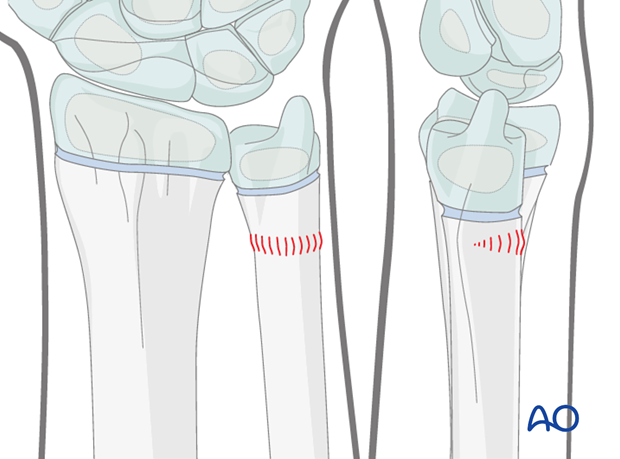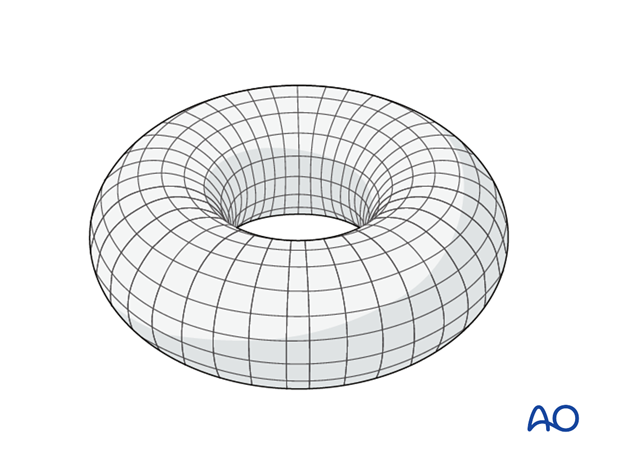23u-M/2.1 Metaphyseal, torus/buckle fractures, ulna
Torus fractures
Bending forces can cause a child’s bone to crease on the compression (concave) side of the bend, leaving the tension cortex (convex) intact, but slightly bent.

This is known as a torus or buckle fracture. A torus is a doughnut-shaped mathematical figure.

A torus fracture is inherently stable (provided the tension cortex is unbroken), will usually model out any angulation over time, and usually requires only simple splintage.
This unusual injury can be caused by a direct blow.
The injury is associated with local tenderness over the distal forearm, specifically over the ulna. Local swelling is uncommon.
X-ray demonstrates a compression injury, usually of the posterior cortex of the ulna.
Greenstick fractures
If the tension cortex breaks, however, the fracture is inherently unstable and progressive angulation is to be expected. Such fractures may be called greenstick fractures.
Reduction and three-point molding of a suitable cast are necessary.













